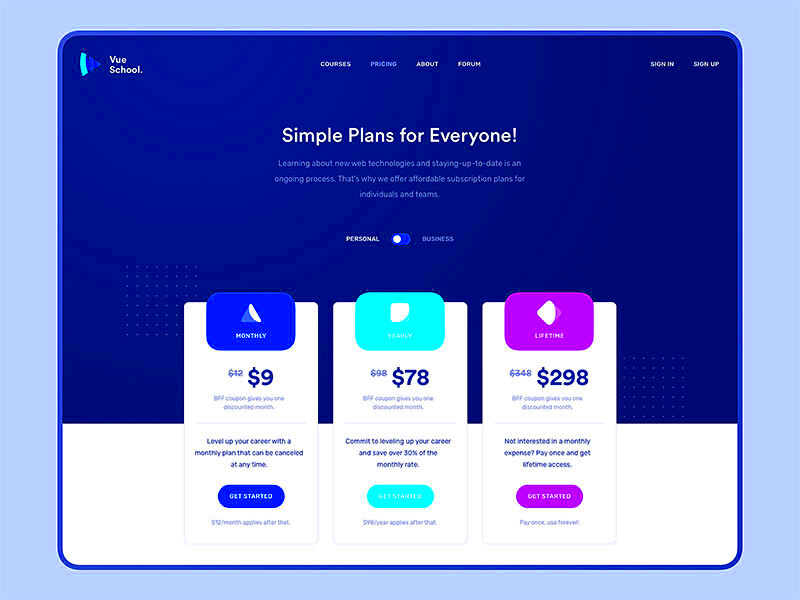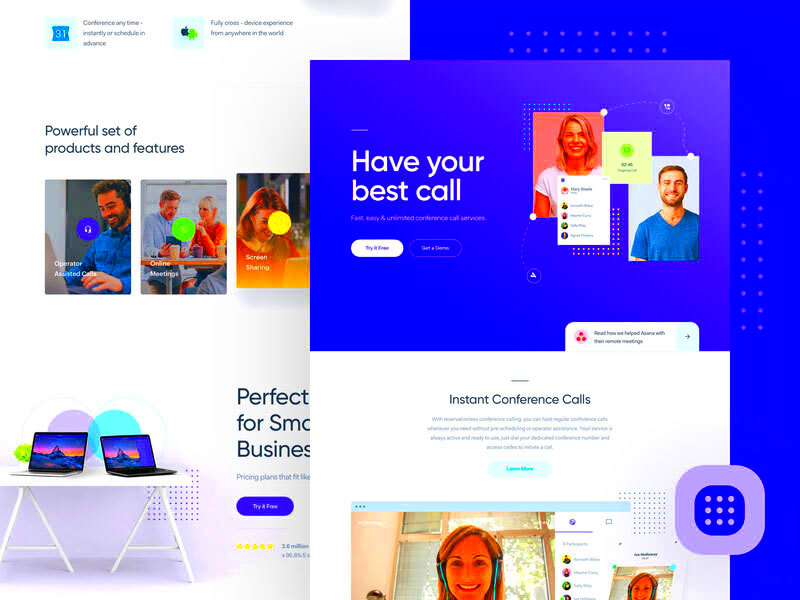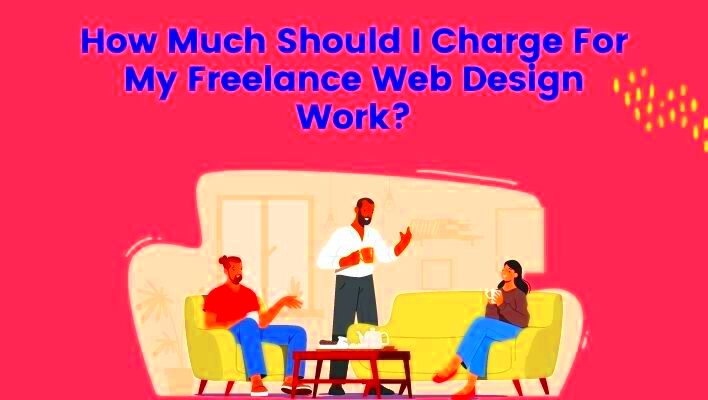Freelance web designers play a vital role in today's digital world. They create websites that are visually appealing and functional, helping businesses establish an online presence. Unlike in-house designers, freelancers work independently, allowing them to take on various projects for different clients.
Typically, a freelance web designer is responsible for:
- Consulting with clients to understand their needs and goals.
- Creating website layouts and prototypes.
- Choosing color schemes, fonts, and graphics to align with the client’s brand.
- Writing and editing website content.
- Ensuring the website is responsive and user-friendly.
- Testing websites for functionality and troubleshooting issues.
This flexibility allows them to adapt to various project requirements, making them valuable assets to businesses of all sizes.
Factors That Affect Charges for Freelance Web Designers

When setting their rates, freelance web designers must consider several factors. Understanding these elements helps both designers and clients set realistic expectations regarding costs.
- Experience Level: More experienced designers typically charge higher rates due to their skills and portfolio.
- Project Complexity: Simple websites will cost less than complex, feature-rich ones that require extensive planning and coding.
- Geographic Location: Rates can vary based on the local market and living costs. Designers in urban areas may charge more than those in rural regions.
- Client's Budget: Some clients have specific budgets, which can influence the pricing structure.
- Timeline: Rush jobs or projects with tight deadlines might incur additional fees.
By evaluating these factors, freelance web designers can establish fair and competitive pricing for their services.
Also Read This: Are There Any Websites Similar to Fiverr? Exploring Top Alternatives
Average Rates for Freelance Web Design Services

Understanding average rates can help freelance web designers price their services competitively while ensuring fair compensation. Rates can vary widely based on the factors discussed earlier.
Here's a general breakdown of average rates:
| Type of Service | Average Rate (per hour) |
|---|---|
| Basic Website Design | $30 - $75 |
| E-commerce Website Design | $50 - $150 |
| Custom Web Applications | $75 - $200 |
| Website Redesign | $40 - $100 |
Many freelancers may also offer project-based pricing, where the total cost is determined based on the scope and requirements of the project. Understanding these rates helps clients make informed decisions while enabling designers to charge appropriately for their skills.
Also Read This: What is Fiverr Business?
How to Determine Your Rate as a Freelance Web Designer
Setting your rate as a freelance web designer can feel challenging, but it's crucial for your success. Your rate reflects your skills, experience, and the value you bring to your clients. By taking a thoughtful approach, you can establish a rate that works for you and your clients.
Here are some steps to help you determine your rate:
- Evaluate Your Experience: Consider how many years you've been designing websites and the variety of projects you've completed. More experience usually means higher rates.
- Research Industry Standards: Look up what other freelance web designers charge. This can vary by location and expertise, so check multiple sources.
- Consider Your Skills: If you specialize in certain areas like UX design or e-commerce platforms, you can charge a premium for your niche skills.
- Factor in Your Costs: Account for business expenses, such as software, equipment, and taxes. Make sure your rate covers these costs and leaves you with a profit.
- Test the Market: Don't be afraid to adjust your rates based on client feedback. If you're getting more work than you can handle, it might be time to raise your prices.
By taking these steps, you can set a rate that reflects your worth while remaining attractive to potential clients.
Also Read This: What is the Minimum Withdrawal on Fiverr?
Negotiating Rates with Clients
Negotiation is a vital skill for freelance web designers. It can be uncomfortable, but it's also an opportunity to communicate your value and establish fair terms. Here are some tips to help you navigate this process:
- Know Your Worth: Be confident in your skills and the rates you've set. Understand the value you bring to the table.
- Be Prepared: Before negotiations, have a clear understanding of your bottom line. Know the minimum rate you can accept.
- Listen Actively: Pay attention to the client's needs and concerns. This will help you tailor your responses and find common ground.
- Be Flexible: Consider alternative solutions if a client can’t meet your rate. This could include payment plans, adjusting project scope, or offering discounts for long-term contracts.
- Document Everything: Once you reach an agreement, document the terms in a contract. This protects both you and your client.
Negotiation is not just about money; it’s about building a relationship with your clients. By approaching these discussions thoughtfully, you can create a win-win situation.
Also Read This: Amount Freelancers Should Set Aside for Taxes
Common Payment Structures for Freelance Web Design
When working as a freelance web designer, understanding different payment structures is essential. Choosing the right one can affect your cash flow and overall project management. Here are some common payment structures you might consider:
| Payment Structure | Description |
|---|---|
| Hourly Rate | You charge a set rate for each hour worked. This is ideal for projects with uncertain timelines. |
| Fixed Price | You agree on a total price for the entire project upfront. This works well for well-defined projects. |
| Retainer | The client pays a set fee each month for a specified amount of work. This provides stable income and ongoing relationships. |
| Milestone Payments | You receive payments at various project stages. This helps maintain cash flow while keeping the client engaged. |
Choosing the right payment structure depends on the nature of the project and your comfort level. Discuss these options with clients to find what works best for both parties.
Also Read This: How to Make a Fiverr Image
How to Value Your Work as a Freelance Web Designer
As a freelance web designer, valuing your work accurately is key to your success and sustainability in the industry. Your skills, creativity, and time are valuable assets, and recognizing their worth can help you set fair prices and build a solid client base. Here are some ways to effectively value your work:
- Assess Your Skills: Take a close look at your design skills and technical expertise. Consider any unique skills you possess, such as proficiency in certain programming languages or experience with popular design tools.
- Evaluate Your Portfolio: A strong portfolio showcases your best work and can justify higher rates. Highlight projects that demonstrate your ability to solve problems and meet client needs.
- Gather Client Testimonials: Positive feedback from past clients can bolster your credibility and provide evidence of your value. Collect and display testimonials on your website or proposal materials.
- Consider the Time Investment: Factor in the time spent on each project, including research, design, revisions, and communication with clients. Your time is valuable, and your rates should reflect that.
- Stay Updated: Keep up with industry trends and advancements. Continuous learning can enhance your skills and allow you to command higher prices.
By valuing your work appropriately, you’ll be able to set competitive rates and attract clients who appreciate your expertise.
Also Read This: How Much Freelance Copywriters Make
Frequently Asked Questions About Charges for Freelance Web Designers
As a freelance web designer, you might encounter various questions regarding your charges. Addressing these inquiries can help clarify your pricing structure and instill confidence in potential clients. Here are some frequently asked questions:
- What is the average hourly rate for freelance web designers?
Rates can vary widely, but they generally range from $30 to $150 per hour, depending on experience and project complexity. - Do you charge for revisions?
It's common to include a certain number of revisions in the initial quote. Additional changes may incur extra fees, which should be outlined in the contract. - How do you handle payments?
Payment structures can vary. Many freelancers require a deposit upfront, with the remainder due upon project completion or in stages. - Can you provide a fixed price for my project?
Yes, after discussing the project scope and requirements, I can provide a fixed price quote to ensure transparency. - What happens if the project goes over budget?
If additional work is required beyond the agreed-upon scope, I will communicate the changes and provide an updated quote before proceeding.
Answering these questions can help set clear expectations and build trust with clients.
Conclusion on Charges for Freelance Web Designers
In conclusion, understanding how to set and negotiate your rates as a freelance web designer is essential for a successful career. Your charges should reflect your skills, experience, and the value you provide to clients. By considering factors such as project complexity, industry standards, and your own business costs, you can determine a fair rate that benefits both you and your clients.
Effective communication is key when discussing rates. Be open to negotiations while maintaining a clear understanding of your worth. Using various payment structures can also enhance your financial stability and client relationships.
As the freelance landscape continues to evolve, staying informed and adaptable will ensure that you remain competitive and can charge what you deserve for your hard work. By valuing your services correctly, you can create a thriving freelance web design business that meets your financial goals.




